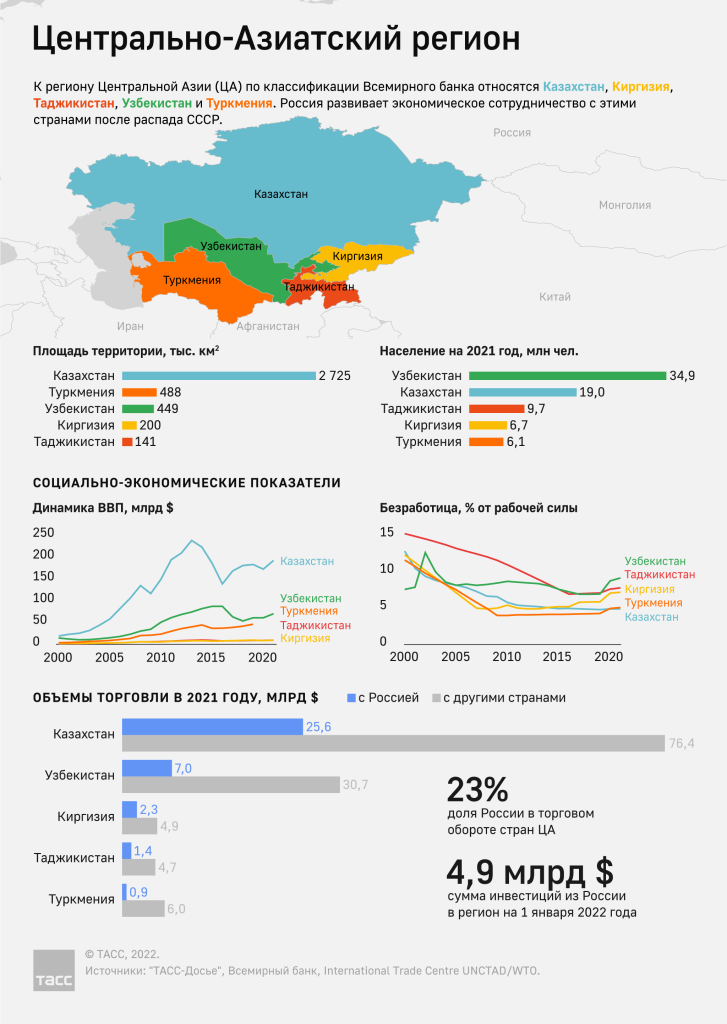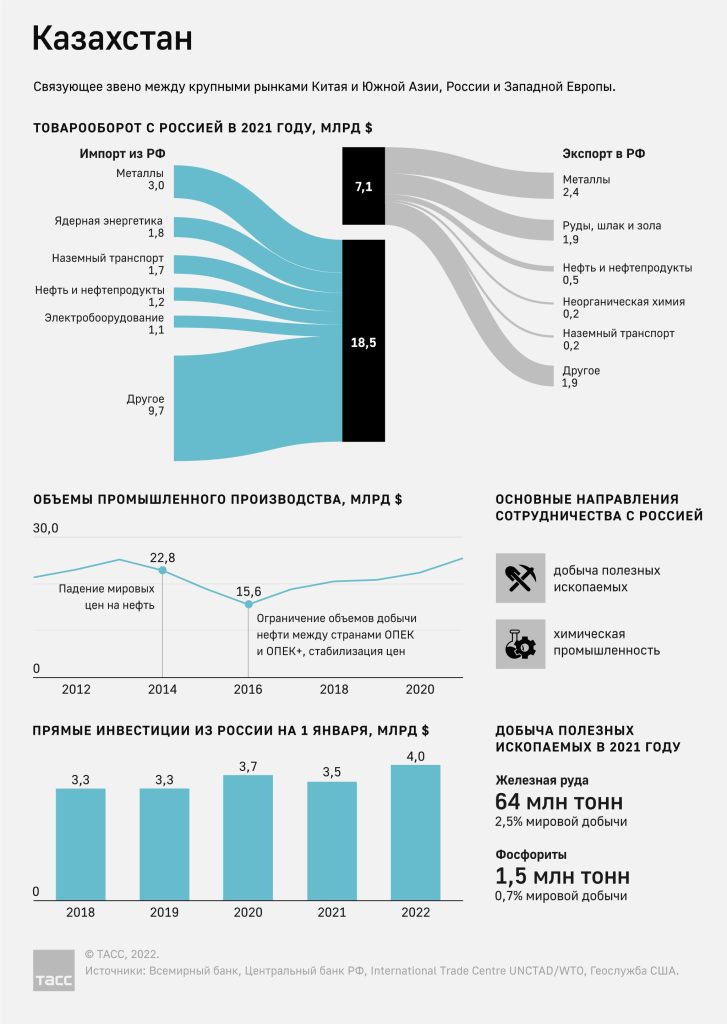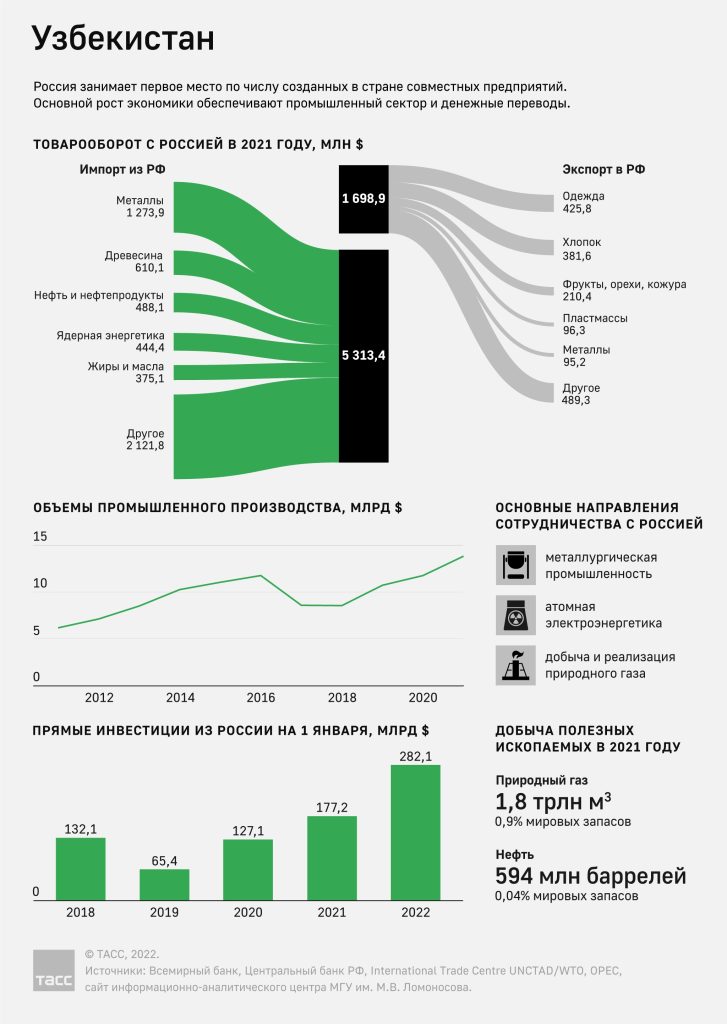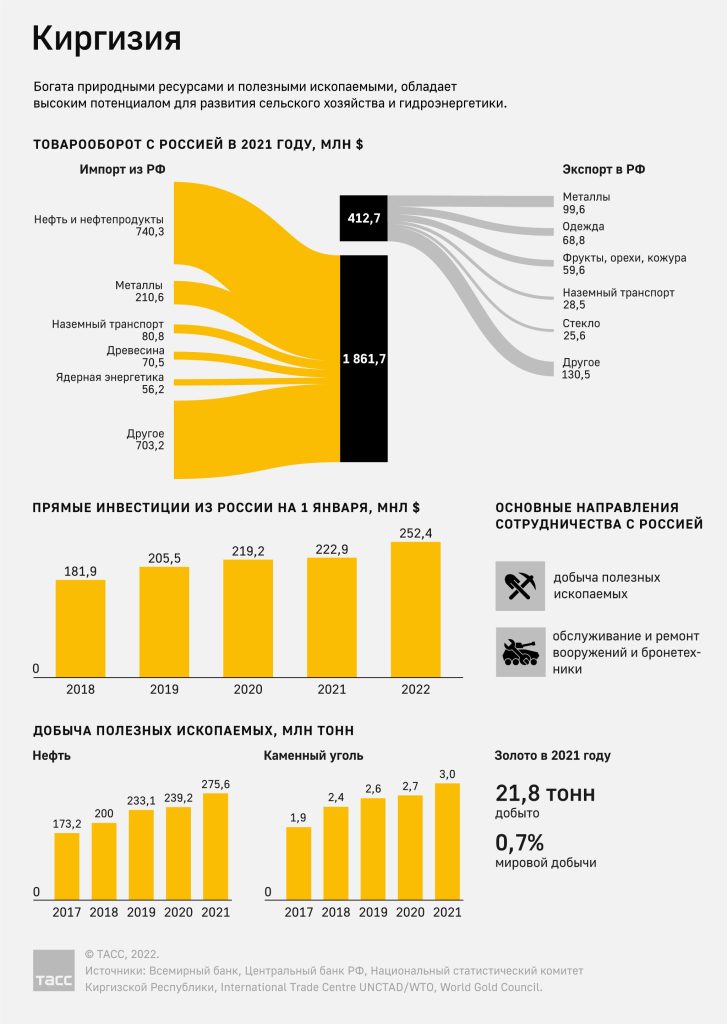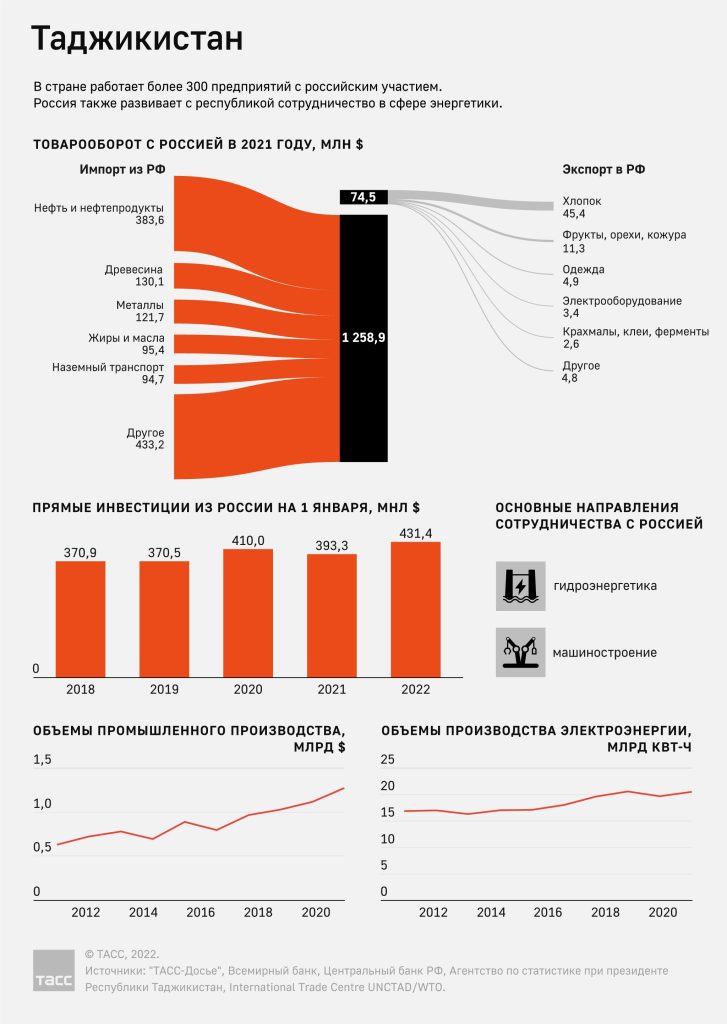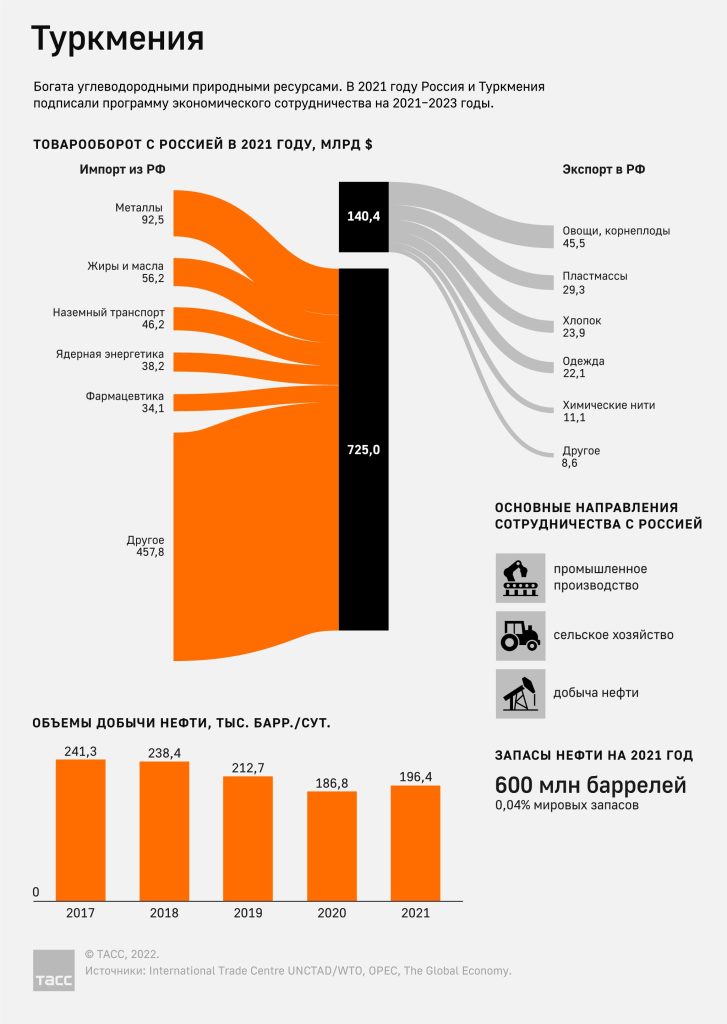2022 marks the 30th anniversary of the establishment of diplomatic relations between Russia and the countries of Central Asia (CA), which were once Soviet republics, but after the collapse of the USSR began their journey as independent states. TASS presents report about how Central Asian economies look today, as well as about the role that Russia plays in this process.
Geographically, the very concept of Central Asia is blurred. For example, some international organizations, such as UNESCO, include Mongolia, the northern part of China, as well as parts of India, Pakistan and Russia in this region. However, in the generally accepted sense, the Central Asian States include: Kazakhstan, Kyrgyzstan, Tajikistan, Turkmenistan and Uzbekistan. The total area of the five “main” Central Asian countries is slightly more than 4 million square kilometers, where about 70 million people live.
Over the years of Russia’s cooperation with the countries of the Central Asian region, strong trade relations have been established, and trade turnover is constantly growing (see infographic). This became especially noticeable in 2022, when Russian trade and diplomatic priorities were seriously shifted towards the East.
The main international projects between the parties are being implemented in the field of industrial production, energy, and mining. So, at the end of November it became known that Russia, Kazakhstan and Uzbekistan are discussing the creation of a “trilateral alliance” in the gas sector. However, it has not yet come to specifics, at this stage we are talking about creating a coordination mechanism. But in general, the parties are ready to conduct a dialogue on this topic.
In addition, one of the most pressing issues of cooperation between Russia and Central Asia is joint security of states. Thus, the President of Kyrgyzstan Sadyr Zhaparov proposed in the autumn to the countries of Central Asia and the Russian Federation to create a common system for ensuring food security. In turn, the President of Kazakhstan Kassym-Jomart Tokayev said that the countries of Central Asia and Russia need to protect a common history and build a shared future. He called on the neighbors to step up efforts to develop intraregional trade. “I would like to draw attention to the creation of favorable conditions for trade. We believe that we should work on eliminating tariff and non-tariff barriers and preventing protectionism. It is necessary to establish cooperation on food security issues,” Tokayev said at the December informal summit of CIS leaders.
Landmark projects
Russia is implementing joint infrastructure projects in each of the five Central Asian states. For example, since 2005, a joint venture with Russia for the production of trucks has been operating on the territory of Kazakhstan. And in 2021, the parties signed an agreement under which it is planned to create a chemical consortium in Kazakhstan worth US $ 1 billion of investments. This company will be the only manufacturer of zirconium oxychloride in the CIS. The project also provides for the production of caustic soda, sodium hydrochloride, titanium dioxide.
To implement the project, it is planned to build several mining and processing plants (GOK), a selective enrichment factory, and a production complex for the production of zirconium oxychloride in Kazakhstan.
One of Russia’s largest projects in Uzbekistan is the construction of the first Uzbek nuclear power plant. The implementation of the project began in December 2017, when the Russian-Uzbek agreement on cooperation in the field of peaceful use of atomic energy was signed. According to the deal, a nuclear power plant with two generation 3+ units with a capacity of 1,200 MW each will be built in Uzbekistan by 2028. The experts estimated the construction of a nuclear power plant would cost US $ 10 billion, part of which Russia will provide as an export loan. The launch of the NPP will allow Uzbekistan to save 3.7 billion cubic meters of natural gas annually, the export of which can bring about a billion dollars a year to the country.
The Jeruy mine is located in the Talas region of Kyrgyzstan. This is the second gold deposit in the republic in terms of proven reserves after Kumtor. It was opened in 1968, and design and survey work was carried out there in 1985-1990. After the country gained independence, several companies tried to develop Jeruy. Since 2021, the Russian enterprise Alliance-Altyn has been engaged in this project, and this is the largest investment project in Russia and Kyrgyzstan. Total investments in its development exceed US $600 million. According to preliminary data, gold reserves at the deposit amount to about 90 tons, silver — 25 tons.
Sangtudinskaya HPP-1 is a joint venture between Russia and Tajikistan, formed in February 2005 to complete the construction and its subsequent operation. The share of Russia in the authorized capital of JSC Sangtudinskaya HPP-1 is 75%, Tajikistan – 25%. This HPP was built at the expense of the Russia and Russian energy companies within the framework of strategic cooperation with Tajikistan in the field of electric power. Russian investments in the construction of the station amounted to more than 16 billion rubles. The installed capacity of Sangtudinskaya HPP-1 with four hydroelectric units is estimated at 670 MW, it generates up to 12% of the total electricity and is one of the three largest HPPs of the republic.
Turkmenistan is one of the main “gas” players in the region. For some time, China held a monopoly on the purchase of gas. However, in 2019 Gazprom signed a contract for the purchase of natural gas from the state company Turkmengaz for a period of five years — until 30 June 2024. According to the contract, up to 5.5 billion cubic meters of gas are supplied annually from Turkmenistan to Gazprom. For the Asian country, this deal is beneficial mainly because it allows to feel more confident in negotiations with buyers from other regions, primarily with the Chinese. ///TASS, 28 December 2022
